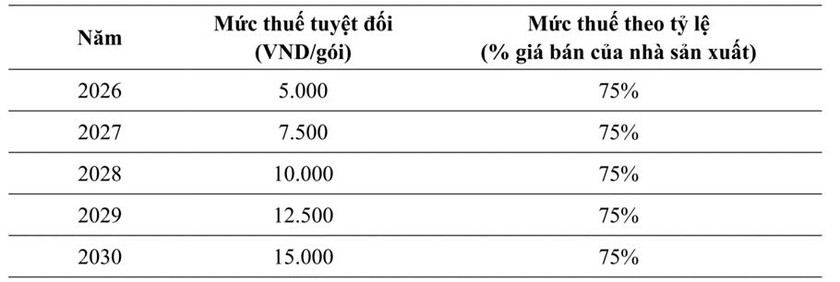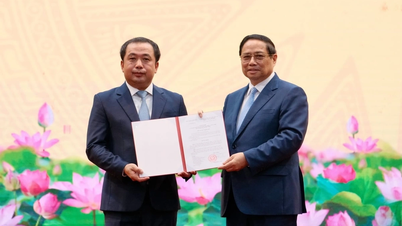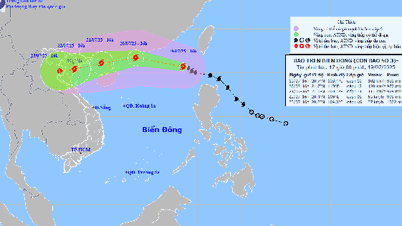More than 45 million Vietnamese people are at risk of tobacco-related diseases.
Dear MSc. Dr. Phan Thi Hai, what are the consequences of tobacco consumption on public health, economic , social and environmental development?
- Tobacco use is one of the leading causes of illness and premature death. Tobacco contains 7,000 chemicals, including 69 carcinogens, and is the cause of 25 diseases such as cancer, cardiovascular disease, respiratory disease and reproductive disease.
According to the WHO report in 2021, tobacco use has been causing a burden of disease and premature death in Vietnam, with more than 104,000 tobacco-related deaths each year (of which 84,500 people die/year due to active smoking and 18,800 people die due to passive exposure to cigarette smoke).
Tobacco use has created a burden of disease and reduced the quality of the labor force. More than 45 million Vietnamese people are at risk of tobacco-related diseases and premature death due to direct smoking or exposure to secondhand smoke.
Every Vietnamese citizen who falls ill or dies prematurely from tobacco-related diseases reduces the size and quality of the labor force for the country's industrialization and modernization. The burden of disease caused by tobacco use will become more evident in the next 10-20 years when current smokers are faced with the health impacts of tobacco use.
In Vietnam, according to preliminary estimates by the Vietnam Health Economics Association in 2022, the total cost related to medical examination and treatment, illness and premature death due to diseases related to tobacco use is 108,000 billion VND per year (equivalent to 1.14% of GDP in 2022). This figure is 5 times larger than the contribution of tobacco tax revenue to the national budget.
In addition, WHO identifies tobacco as the cause of deforestation and environmental pollution. Every year, about 5% of the forest area is destroyed to grow tobacco plants as well as to get wood to dry tobacco. It is estimated that every year 18 billion trees are needed to make firewood to dry tobacco. The use of tobacco releases into the environment each year about 3,000 to 6,000 tons of formaldehyde, 12,000 to 47,000 tons of nicotine, and 300 to 600 million kg of toxic waste from cigarette butts.
Tobacco is easily accessible, even to children and adolescents.
Please tell us about the current situation of tax and cigarette prices in Vietnam?
- From 2006 to 2019, Vietnam has only increased the special consumption tax (SCT) on cigarettes 3 times, but the tax increase each time was low, only 5%, and the time interval between tax increases was quite long (factory price). Specifically, in 2006, the tax rate increased from 55% to 65%. After 8 years, in 2016, it increased from 65% to 70%. 3 years later, it increased from 70% to 75%.
While average inflation during this period was 4% and average income growth was 5%. Therefore, the tax increase had a negligible impact on reducing tobacco consumption during those years.
The rate of tobacco tax calculated on retail price is only 36%, much lower than the average of middle-income countries of 59% and only half of many ASEAN countries (Thailand 78.6%, Singapore 67.1%, Indonesia 62.3%). Meanwhile, the tax rate on retail price as recommended by the World Health Organization is 75% of retail price.
The price of a pack of the most popular brand of cigarettes in Vietnam is only about 0.9 USD/pack. With this price, cigarette prices in Vietnam rank 15th, near the lowest, among 19 countries in the Western Pacific region.
Tax increases are important measures to reduce tobacco consumption.
Please propose a reform of the special consumption tax on tobacco in Vietnam?
- According to the Framework Convention on Tobacco Control (FCTC ), price and tax measures are important and effective measures to reduce tobacco consumption among all segments of the population, especially young people and the poor.
- Resolution 20 dated October 25, 2017 of the Central Executive Committee on strengthening the protection, care and improvement of people's health in the new situation also clearly states: Increase special consumption tax on goods harmful to health such as alcoholic beverages, carbonated drinks, and cigarettes to limit consumption.
- The Law on Prevention and Control of Tobacco Harms stipulates: Apply appropriate tax policies to reduce the rate of tobacco use; Tobacco trading is a conditional business line. The Investment Law also stipulates: Trading in tobacco products, tobacco materials, machinery and equipment in the tobacco industry is a conditional business line.
- Decision No. 568 of the Prime Minister promulgating the National Strategy on Tobacco Harm Prevention and Control to 2030 clearly states: Developing a roadmap to increase taxes on tobacco products to ensure that by 2030 the tax rate reaches the proportion of retail price as recommended by the World Health Organization (70-75% of retail price)...
Regarding tax rates, according to calculations by experts from the World Health Organization and proposals from the Ministry of Health, in addition to the relative tax of 75%, we need to add an absolute tax rate on tobacco products at a rate of at least VND 5,000/pack by 2026 and gradually increase to reach VND 15,000/pack by 2030. The specific recommended plan is as follows:
This plan will help reduce the smoking rate among adults, specifically: the smoking rate among men will decrease to below 36% and among women to below 1.0% by 2030, meeting the national strategic goal.
Reduce 3.2 million smokers by 2030 compared to the no tax increase scenario. This reduction is higher than the current plan of the Ministry of Finance of one million smokers.
In particular, the actual tax revenue (adjusted for inflation) will increase by 169%, from VND 17.4 trillion in 2020 to VND 46.4 trillion in 2030 (an increase of VND 29 trillion). This increase is higher than the increase according to the Ministry of Finance's plan of nearly VND 10 trillion.
Thanks for sharing from ThS.BS Phan Thi Hai!
Minh Trang
Source: https://baophapluat.vn/ths-bs-phan-thi-hai-gia-thuoc-la-o-viet-nam-rat-thap-ai-cung-co-the-tiep-can-post546347.html



































































































Comment (0)